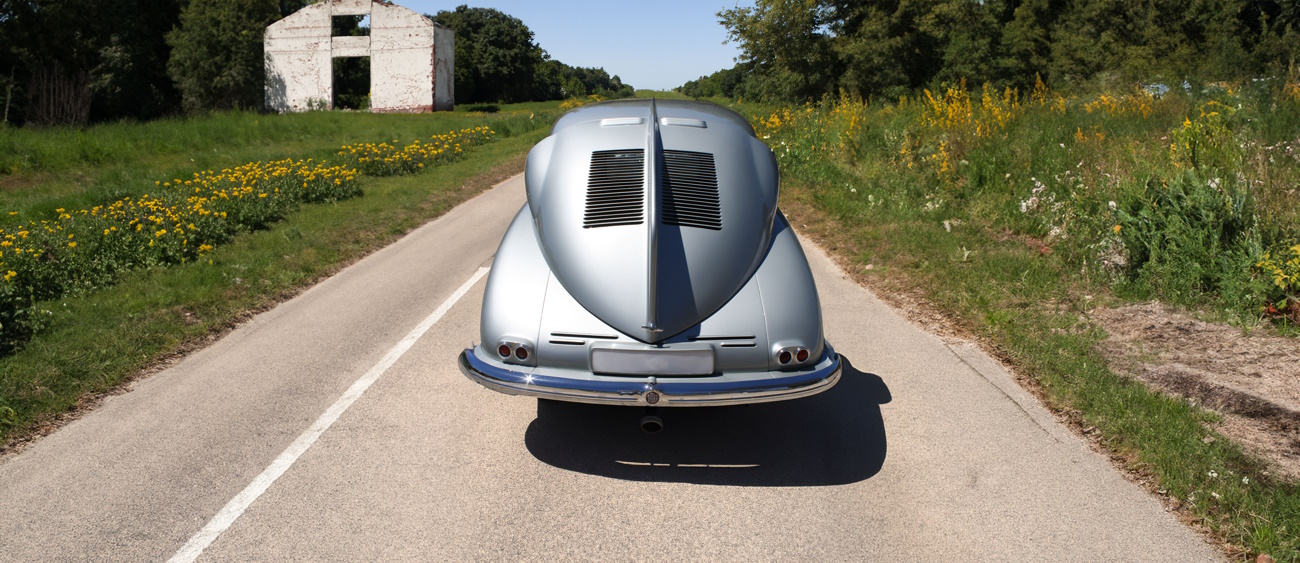TGR Staff - 01/08/2024
When you think of the automotive industry, Czechoslovak doesn't spring to mind, but in 1937 the streamlined V8-powered Tatra T87 was a departure from the other offerings of 1937, most other cars looked like the Vauxhall 10-4 with its traditional grill and fenders. The T87 featured aerodynamic bodywork inspired by Zeppelin designer Paul Jaray and was so fast that it is alleged that the T87 killed several German officers on the Autobahn, leading to the Nazis banning officers from driving the car.
The heart of the T87 was a rear-mounted 2.9-litre air-cooled 90-degree overhead cam V8 engine, producing a remarkable 85 horsepower. This powerhouse propelled the sleek car to speeds nearing 100 mph (160 km/h), earning it a spot among the fastest production cars of its time. What set it apart was its efficiency – a feat achieved with just half the displacement of its competitors.
In a world where fuel consumption was a growing concern, the Tatra 87 emerged as an economical choice. While other cars in its class guzzled fuel at a rate of 20 liters per 100 km (11.8 mpg), the T87 boasted a frugal 12.5 liters per 100 km (18.8 mpg), thanks to its aerodynamic design and light weight.
Hanzelka and Zikmund, intrepid explorers, embarked on a journey through Africa and Latin America from 1947 to 1950, relying on the T87 for their adventures. Its reliability and performance made it a vehicle of choice for those seeking both style and substance both pre and post-war.
The design of the Tatra 87 was a work of art, crafted by Hans Ledwinka and Erich Übelacker, drawing inspiration from the Tatra 77, their pioneering aerodynamic car. The iconic fin at the rear, resembling a shark's fin, not only added a distinctive touch but also played a crucial role in dividing air pressure and stabilizing the car at higher speeds. This technique, later adopted in aircraft, contributed to the car's remarkably low drag coefficient of just 0.36.
The T87's interior was a fusion of elegance and practicality. Small sets of windows allowed limited rear visibility, and louvers provided essential air for the air-cooled engine. The rear clamshell allowed easy access for engine maintenance making maintenance a breeze. The front doors were reverse opening "suicide doors," which not only added a touch of uniqueness to the car's design but also made getting in and out of the T87 easy.
The Tatra 87's influence extended beyond its time, inspiring later car manufacturers. Ferdinand Porsche, for instance, drew inspiration from the T87 in designing the Volkswagen Beetle, leading to a legal tussle between Tatra and Porsche. In its heyday, the Tatra 87 came with a price tag of 25,000 SFr. Today, its value stands at around $125,000.
A 1941 Tatra 87, meticulously owned and restored by Paul Greenstein and Dydia DeLyser of Los Angeles, claimed the top spot in a New York Times reader's poll of collector's cars in 2010. The T87 owners are almost as interesting as the car itself. The list of notable owners include Hans Ledwinka, Eliška Junková, Ernst Heinkel, Felix Wankel, Emil František Burian, Vítězslav Nezval, Andrey Yeryomenko, John Steinbeck, Farouk I of Egypt, Josef Beran, Edvard Beneš, Antonín Zápotocký, Klement Gottwald, Jay Leno, and Norman Foster.
The Tatra 87, with its groundbreaking design, stellar performance, and a cast of illustrious owners, stands as a symbol of automotive excellence, leaving an indelible mark on the annals of motoring history. If you ever get a chance to drive or ride in one, take it.








_websize.jpg)










